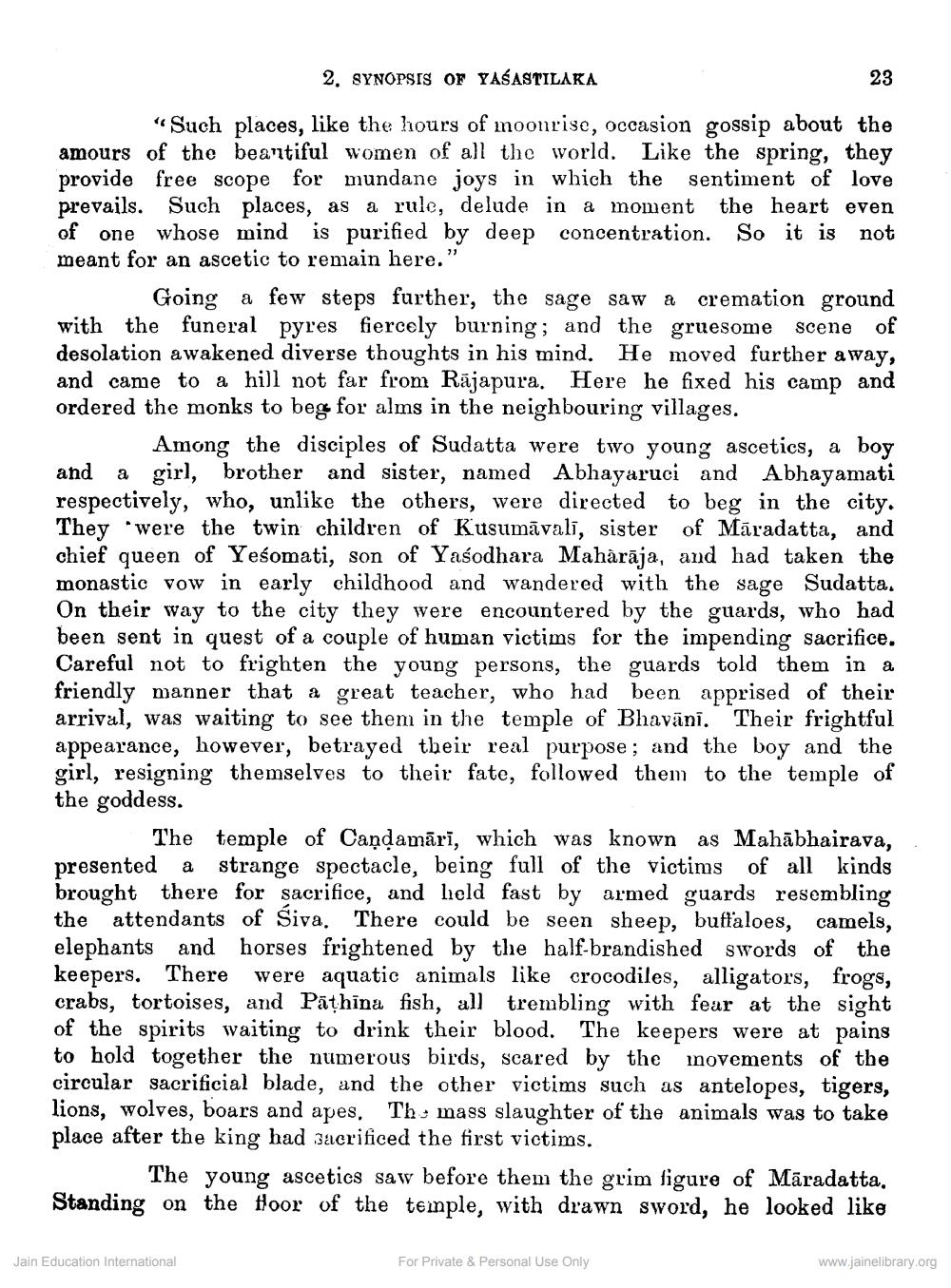________________
2. SYNOPSIS OF YAŠASTILAKA
23
"Such places, like the hours of moonrise, occasion gossip about the amours of the beantiful women of all the world. Like the spring, they provide free scope for mundane joys in which the sentiment of love prevails. Such places, as a rule, delude in a moment the heart even of one whose mind is purified by deep concentration. So it is not meant for an ascetic to remain here.'
Going a few steps further, the sage saw a cremation ground with the funeral pyres fiercely burning; and the gruesome scene of desolation awakened diverse thoughts in his mind. He moved further away, and came to a hill not far from Rajapura. Here he fixed his camp and ordered the monks to beg for alms in the neighbouring villages.
Among the disciples of Sudatta were two young ascetics, a boy and a girl, brother and sister, named Abhayaruci and Abhayamati respectively, who, unlike the others, were directed to beg in the city. They were the twin children of Kusumāvalī, sister of Māradatta, and chief queen of Yesomati, son of Yasodhara Maharāja, and had taken the monastic vow in early childhood and wandered with the sage Sudatta. On their way to the city they were encountered by the guards, who had been sent in quest of a couple of human victims for the impending sacrifice. Careful not to frighten the young persons, the guards told them in a friendly manner that a great teacher, who had been apprised of their arrival, was waiting to see them in the temple of Bhavānī. Their frightful appearance, however, betrayed their real purpose; and the boy and the girl, resigning themselves to their fate, followed them to the temple of the goddess.
The temple of Candamārī, which was known as Mahābhairava, presented a strange spectacle, being full of the victims of all kinds brought there for sacrifice, and held fast by armed guards resembling the attendants of Siva. There could be seen sheep, buffaloes, camels, elephants and horses frightened by the half-brandished swords of the keepers. There were aquatic animals like crocodiles, alligators, frogs, crabs, tortoises, and Pāțhina fish, all trembling with fear at the sight of the spirits waiting to drink their blood. The keepers were at pains to hold together the numerous birds, scared by the movements of the circular sacrificial blade, and the other victims such as antelopes, tigers, lions, wolves, boars and apes. The mass slaughter of the animals was to take place after the king had sacrificed the first victims.
The young ascetics saw before them the grim figure of Māradatta. Standing on the Hoor of the temple, with drawn sword, he looked like
Jain Education International
For Private & Personal Use Only
www.jainelibrary.org




